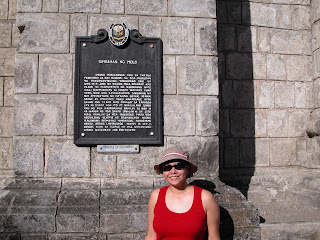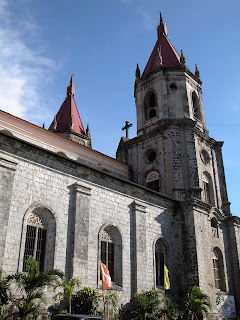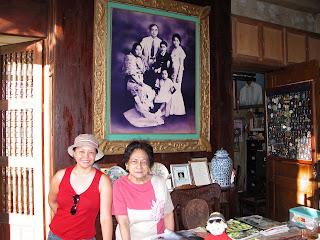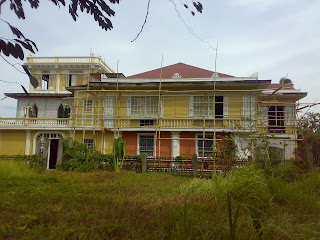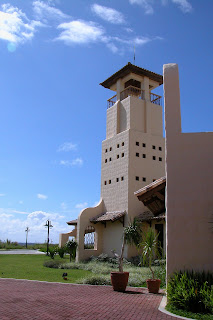

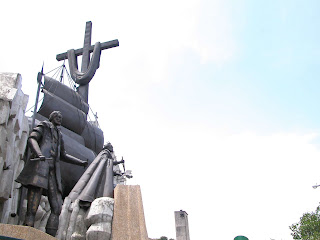
Published in Lifestyle Asia Travel Magazine 2005
Day Trip Cebu
Roadtrip. The idea can be romantic for some, adventurous for others and a hostile NO WAY! for those who prefer to travel from one place to the other with a defined destination and itinerary. I have been an avid traveler for as long as I can remember, and no matter the mode of transport, as long as it can accommodate my body, a backpack, my camera and munchies I’m good to go. I am not considered an “extremist” of any sort, so I have yet to try a major off road jaunt, but I do like going to sights and scenes undiscovered or overrun by commercialism as I feel, there is always a way to look at something in an unequaled, uncopied way. So, when an invite to go see what’s around by hopping into a car, armed with a map and a good driver ( although control obsessed, when it comes to driving, I prefer the cushy shot gun position) I make sure that my batteries for my Nikon are charged and that I have something to record my notes on. Weapons of choice is a black moleskin sketchpad and a pencil.
Here’s the thing, as I mentioned previously, a roadtrip does evoke several reactions depending on your target audience, and someone very wise told me, that if you want someone to come back for more…the first experience must always be pleasant. So, here I go, with a roadtrip itinerary for newbies…those who want the “luxury” of getting away on a mini-break with the potential “roughness” of the unpredictable and the bragging rights that somehow (although the tale must be somewhat edited) they went off the beaten path.
Why Cebu? First and foremost, Cebu is the 2nd largest metropolitan city in the Philippines. Translation if your group or companion whom you’ve convinced to fly out with you decide to wimp out, they can always find a five star accommodation and the same amenities they would find in Metro Manila within reach in the Queen City of the South.. You have to FLY out to get to Cebu, so it certainly qualifies as an OUT OF TOWN road trip. As long as hardcore roatrippers don’t ask for too many details, they will certainly be impressed by the idea that you had to travel a significant distance for said excursion. Another advantage of doing a road trip in Cebu is the availability of comfortable vehicles to sit a rather fussy rear end ( and the person its attached to) in. You can rent a car, or hire a car and a driver…if you don’t want to do the actual driving. I was lucky enough to be invited by someone who had purchased an imported Land Cruiser Prado, it was complete with sun roof, and in my opinion the best feature a built in cooler in between the two front seats! It certainly was the perfect size for two large bottles of mineral water and as many other less healthy varieties of liquid replenishment available in the market.
An appropriate time to start off discovering the outskirts of Cebu would be very early in the morning and on a weekend. Sunday was the day of choice for a whole day getaway. Cebu, having the charms of a cosmopolitan city is also a victim of its traffic and jams, so a Sunday while people are still sleeping in from a Saturday night out is perfect.
For those early birds, you can leave as early as 6am to catch the rising sun, and for those who would like some time to actually wake up and be coherent, 8am is also good. As this is written with the spirit of fun, and LOTS of excuses to turn back or not proceed forward, I have included as many rest stops as possible and the most scenic for endless photo taking and video opportunities. One thing I will stress is that no matter if you’re on the road, off the road, on-foot, traveling leisurely or traveling for the adrenaline rush of adventure sports, it’s always good karma to respect your environment, its inhabitants and of course the people around you. There is a saying that goes:
Leave nothing but footprints
Take nothing but pictures
Kill nothing but time
Keep nothing but memories.
With this in mind, the roadtrip begins.
8am-Getting ready to leave your hotel or resort of choice, we will assume that by this time you are in the city center and not in the island of Mactan which will probably incur 20 mins more travel time (without traffic). First stop is BIG BUCKS COFFEE, a 24 hour (I just love anything open 24 hours) coffee shop that looks suspiciously similar to a world renowned Seattle originated coffee shop chain. There is a great selection of teas, coffee, and other beverages, plus sandwiches and pastries ( I like their veggie sandwich) that you can take with you on your trip, if you’re the type who doesn’t get carsick and can eat in the car. There are about 3 flat screen tvs tuned into CNN so if you’re not into reading the daily rag ( they can give you nasty print ink stains) you can catch a little news before heading out. Direction chosen for this day is the South West of Cebu..a good drive along the coast.
830am By this time or even earlier, you have been traveling on the very scenic SRP or South Reclamation Project. This area is the future address of the Department of Tourism. It is an extremely well paved spacious highway that allows really good views of the sea to the left, and the Central Business District to the right. A great photo opportunity along here would be the old and abandoned Casa de la Maritima. Not too sure if you can actually pull over and get down, but it’s worth a shot ( literally). Am not an expert on architecture, but the leftover structure is very pretty, the filmmaker in my head whispers “great place to shoot a film”. Cebu has benefited from renovations on its roads and highways for the last six years under the leadership of its Governor, Gwen Garcia.
( Whose name sounds disturbingly similar to a Viva Hot Babe)
9am After about 30km of commenting on the smoothness of the road ( I have yet to encounter one so smooth besides the Skyway in Metro Manila) you can stop for breakfast and a rest at Pulchra, a five star resort located in San Isidro, San Fernando. Don’t drive too fast or else you will miss the sign. I highly recommend the fil. Breakfast as the boneless bangus is not served the way it usually is..the whole fish laid out in front of you, but in small very cut-table portions. The entire resort seems to be connected by a pool, and in fact, since the beach is nothing special in my opinion, a guest should opt for a room that has its own private pool. If one hour on the road has already tired you out, it would be a good idea to spend the next couple of hours relaxing in Pulchra, by the main pool or perhaps treat yourself to an early morning massage.
1130 After you leave the long driveway of Pulchra, within 20 mins you should hit the town Carcar-or as I have nicknamed it Chicharon Pitstop. When you get to the main square you can do a little sightseeing and visit the Church, take photos of the façade of the emergency hospital and the school of St. Catherine. Again, I know nothing about architecture but I’m pretty sure they were constructed under Spanish influence. As I mentioned earlier, this is the best place to buy some snacks for your road trip, there are chicharon vendors a plenty, and for those followers of Islam or strict vegetarians, you can always purchase other Cebu like treats such as ampao or bocayo. I never leave a pitstop without nourishment..just in case. After the photo snapping and the snacking, continue south.
12pm Although the roads narrow slightly as you pass through the towns of Barili, Dumanjug, they remain pot hole and crack free. In other words, if you’re not too interested in seeing what’s outside the window and have finished an entire bag of chicharon, it’s a perfect time to take quick catnap before you reach
1pm Moalboal offers several resorts along its white beach where you can stop for lunch. There is the Asian Belgian Resort, The Dolphin House, and the place where GMA stayed when she did a diving trip, Club Serena. My suggestion is, if you dive, this is the best place for a quick one. If the rest of your party doesn’t dive, they can have lunch, tan and swim.
3pm Kawasan Falls, Badian. You know you’re going the right way as you continue to head down south when you spot the signage KAWASAN FALLS on the left side of the street at the entrance of Matutinao Park right after a church. These falls are a no-miss and it’s best to see them while the sun is still high up in the sky. I had heard about these falls prior to my road trip and was not expecting much since I thought..falls, are falls. It’s about a 30 min. walk from where you park your car ( P 50 parking fee!!-Makati prices!) to the first set of falls. The walk is a journey into itself as the pathway is lush with foliage and a continous running stream. I exaggerate a little bit when I say it reminded me to a certain degree of the pathway from Elron..to wherever the Hobbit and the rest of his troupe had to go to save…never mind, I’m sure you get my drift. The falls are certainly worth the walk, and there are two bridges one can cross to get there. I would highly suggest a swim and a little raft trip towards the falls, the water is clean and you can see right through to the bottom. The rest stop here is called Wily’s Place and you can have a snack and a drink before and after your swim there is a P10 entrance fee per head. The water feels invigorating and there is some kind of elemental magic in the air being so close to nature. Just try and turn a blind eye to the monoblock chairs and plastic table covers at the restaurant. The entire setting is very picturesque and if you are a frustrated botanist or would like to pretend you have a natural green thumb, you will appreciate the wide variety of tropical plants that have sprouted all over the area.
6pm-At this point, there are two options. The first is to continue down south and do the whole tip of the island and head home, or, the second, which is just to head back home. Perfect time to catch the setting sun on the drive back. On the way, if you get hungry and have already finished the chicharon and other snack previously purchased, there are several roadside bakeshops that offer a variety of pastries. One favorite that is reminiscent of my childhood at least is a kind of bread that is filled with butter and sugar. Not the most calorie or diabetic friendly snack but delicious all the same. Without traffic and any bathroom stopovers, the drive should take around 8pm, just in time for dinner in any of the establishments found in the city center. I prefer the ambiance of The Tinder Box located in Banilad. Good place to grab a good glass of wine, deli like fare, and for others, to light up a cigar.
10pm- A good after dinner wrap up and a perfect way to end a road trip is a trip to Meddah spa which is at The Crossroads, a row of restaurants, clubs and other nightspots right beside The Tinder Box. The beauty of Meddah is that it’s open til quite late and is very peaceful and quiet once inside. You can opt for foot reflexology or an overall body shiatsu massage.
After an hour or so of bliss, you can head back to your hotel room and reminisce on the trip. In my case, I went through the various photos I took felt tranquil and relaxed after my massage to go into deep sleep. Ready again, perhaps for another roadtrip the next morning. I hope your first trip and the subsequent ones you take will always be pleasant.
Information: Pulchra Resort, San Isidro, San Fernando. + 63 (32) 2320823 to 25 email:info@pulchraresorts.com for room rates and types visit www.pulchraresorts.com
Meddah Spa Unit R&S Crossroads, Banilad Mon.-Sun. 11pm final booking at 10pm tel. + 63 (32) 2342080 or 234 2083
Club Serena Resort, Basdaku, Moalboal Telefax +63 32 232 5907
Mobile +63 920 902 8888 or www.clubserenaresort.com

 As part of the work I do for my family's foundation I took a trip recently to visit two of the projects that we have been funding. One of them I've taken a personal interest in and it's one that we have been giving money too for the last five years. In fact, for my birthday about 3 years ago I actually spent it there with the kids and had friends and colleagues donate what they wanted to the kids and a clown act donated their services to entertain the kids for the day. There was food and some toys and of course money that was given that day and since then I've been getting regular reports of the progress and status of the Living for Learning Foundation. Last week when I went I was happy to see that the overall environment was still very clean and that the children were all very well-groomed, clean and eating a healthy diet. Patricia MacAuliffe, a Canadian lady who has been in charge of the foundation for many years makes sure that their diets consist mainly of vegetables and fish while meat and fast food are kept to a strict minimum-which is rare for most filipino diets.
As part of the work I do for my family's foundation I took a trip recently to visit two of the projects that we have been funding. One of them I've taken a personal interest in and it's one that we have been giving money too for the last five years. In fact, for my birthday about 3 years ago I actually spent it there with the kids and had friends and colleagues donate what they wanted to the kids and a clown act donated their services to entertain the kids for the day. There was food and some toys and of course money that was given that day and since then I've been getting regular reports of the progress and status of the Living for Learning Foundation. Last week when I went I was happy to see that the overall environment was still very clean and that the children were all very well-groomed, clean and eating a healthy diet. Patricia MacAuliffe, a Canadian lady who has been in charge of the foundation for many years makes sure that their diets consist mainly of vegetables and fish while meat and fast food are kept to a strict minimum-which is rare for most filipino diets.








